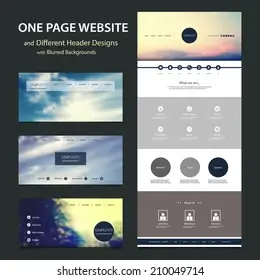From Classroom to Clinic: How Education Can Change Health Outcomes.
Being well educated in health can lead to positive health outcomes. Learn how education can shape your overall health and wellbeing by reading this blog post by experts in health and teaching. Find out how you can use what you learn in the classroom to impact the clinic.
From Classroom to Clinic: Bridging the Gap with Health Sciences Learners
Your Video is here . From Classroom to Clinic: How Education Can Change Health Outcomes
From Classroom to Clinic: How Education Can Shape Health Outcomes
Education plays a significant role in a person’s understanding of health and its importance. People who are better educated about health have better health outcomes. In this blog post, we’ll discuss how education can shape health outcomes, and what education can do to help people maintain and improve their health.
Why Education Matters
It’s no secret that education has a powerful impact on the success of an individual’s health and wellness. We know that individuals who have a deeper understanding of health and wellness are more likely to lead healthier lives. Those who are not educated about health may be less likely to make healthy choices and less likely to advocate for their own health and wellness.
Education about health and wellness starts in the classroom. It begins with building a foundation of essential knowledge about the human body, nutrition, exercise, and the importance of healthy habits. As students learn more about health, they are better prepared to make informed decisions about their lifestyle.
In the Classroom
In the classroom, teachers have a unique opportunity to help shape students’ understanding of health. By providing accurate and up-to-date information about health and wellness, teachers can help their students develop a comprehensive understanding of healthy living.
In addition to presenting factual information, teachers can also help students develop critical-thinking skills when it comes to health decisions. Through active learning and discussion, teachers can empower students to make their own decisions about how to maintain and improve their wellness.
Health Education Resources
To help teachers deliver comprehensive health education, there are a number of resources available. These range from lesson plans and activities to multimedia resources and curriculum guides.
One of the most popular resources is the Centers for Disease Control and Prevention (CDC) Health Education Curriculum Assessment Toolkit. The Toolkit is a comprehensive health education curriculum for teachers, which includes resources to teach students about nutrition, physical activity, and other health-related topics.
The National Institutes of Health (NIH) also offers a suite of resources for teachers, including lesson plans, activities, and even free poster sets. The NIH resources can help teachers provide students with a comprehensive understanding of health and well-being.
From Classroom to Clinic
Educating students about health in the classroom can help shape how they approach health decisions in their lives. As students gain a better understanding of health, they are better prepared to make informed decisions that promote their health and well-being.
It’s also important for educators to partner with healthcare providers in order to help bridge the gap between the classroom and the clinic. When students have access to health professionals. They are better informed about their health needs and can make more informed decisions about their lifestyle.
Conclusion
From the classroom to the clinic, education has an important role to play in shaping health outcomes. By providing accurate, evidence-based information about health and wellness, teachers can help students develop the knowledge and skills they need to make informed decisions about their health. Educators can also partner with healthcare providers to ensure students have access to the information and resources they need to make healthy decisions.
What role does education play in health outcomes?
Education is key to understanding the importance of health and making informed decisions about it. Those who are educated about health are more likely to lead healthier lives and be better advocates for their own health and wellness.
What resources are available for teachers to deliver comprehensive health education?
There are a number of resources available for teachers to provide comprehensive health education. The CDC offers a Health Education Curriculum Assessment Toolkit. The NIH offers a suite of resources, including lesson plans and activities.
What is the best way to bridge the gap between the classroom and the clinic?
Partnering with healthcare providers is a great way to bridge the gap between the classroom and the clinic. When students have access to health professionals. They are better informed about their health needs and can make more informed decisions about their lifestyle.
How can teachers help students develop critical-thinking skills when it comes to health decisions?
Through active learning and discussion, teachers can help students develop critical-thinking skills when it comes to health decisions. This way, they can empower students to make their own decisions about how to maintain and improve their wellness.
